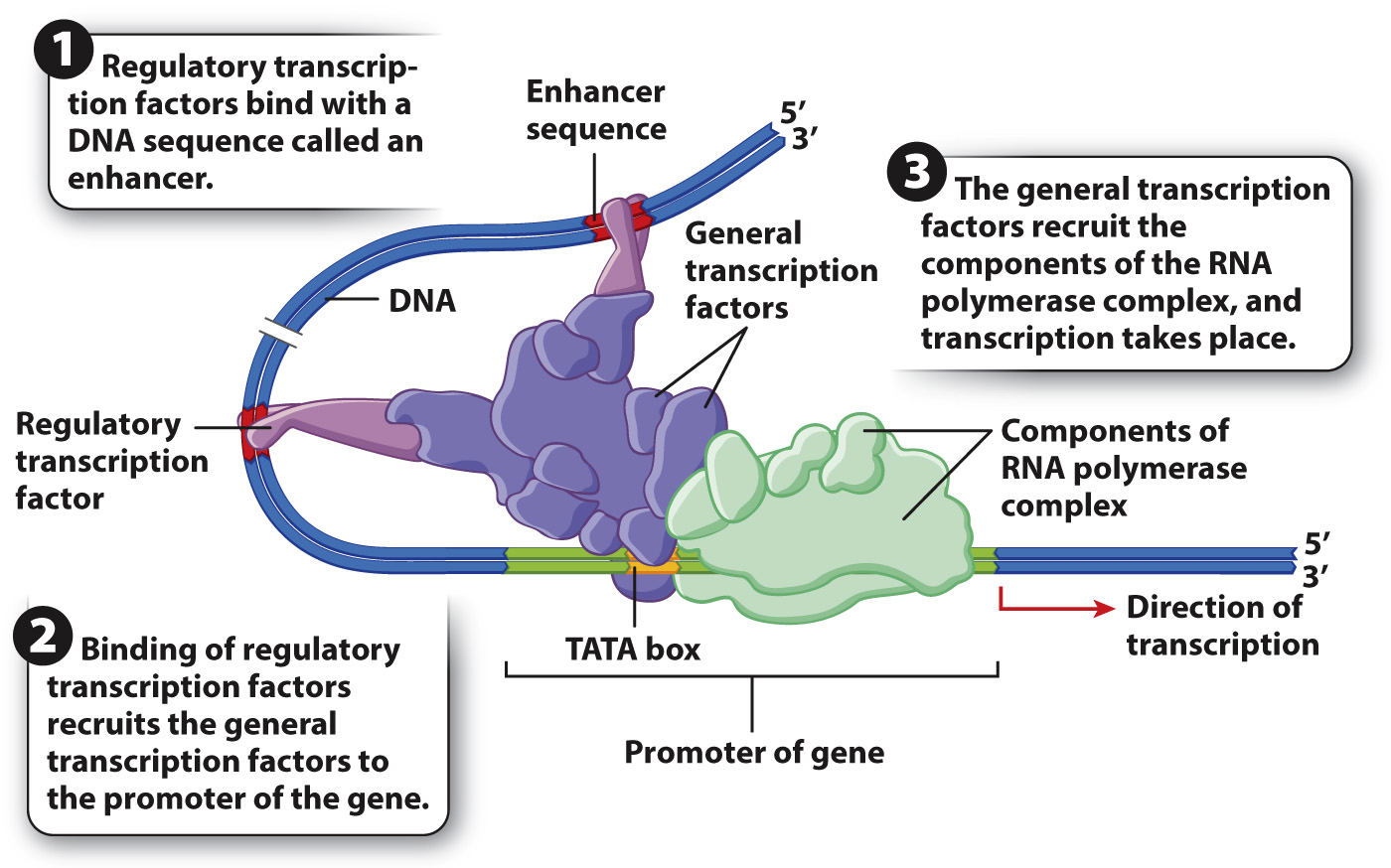Transcription is a key control point in gene expression.
While access to DNA and appropriate histone modifications are necessary for transcription, they are not sufficient. The molecular machinery that actually carries out transcription is also required once the template DNA is made accessible through chromatin remodeling and histone modification. The mechanisms that regulate whether or not transcription occurs are known collectively as transcriptional regulation (see Fig. 19.1b).
Transcriptional regulation in eukaryotic cells requires the coordinated action of many proteins that interact with one another and with DNA sequences near the gene. Let’s first review the basic process of transcription in eukaryotes (Chapter 3). First, an important group of proteins called general transcription factors are recruited to the gene’s promoter, which is the region of a gene where transcription is initiated. The transcription factors are brought there by one of the proteins that bind to a short sequence in the promoter called the TATA box, which is usually situated 25–
Where in the many steps of transcription initiation does regulation occur? The first point at which transcription can be regulated is in the recruitment of the general transcription factors and components of the RNA polymerase complex (Fig. 19.6). Recruitment of these elements is controlled by proteins called regulatory transcription factors. Transcription does not occur if the regulatory transcription factors do not recruit the components of the transcription complex to the gene. Some regulatory transcription factors recruit chromatin remodeling proteins that allow physical access to a gene. Other regulatory transcription factor have two binding sites, one of which binds with a particular DNA sequence in or near a gene known as an enhancer (Fig. 19.6) and the other of which recruits one or more general transcription factors to the promoter region. The general transcription factors then recruit the RNA polymerase complex, and transcription can begin (Chapter 3).

Hundreds of different regulatory transcription factors control the transcription of thousands of genes. Some bind with enhancers and stimulate transcription; others bind with DNA sequences known as silencers and repress transcription. Enhancers and silencers are often in or near the genes they regulate, but in some cases they may be many thousands of nucleotides distant from the genes. A typical gene may be regulated by multiple enhancers and silencers of different types, each with one or more regulatory transcription factors that can bind with it. Transcription takes place only when the proper combination of regulatory transcription factors is present in the same cell, as shown in Fig. 19.6. Since transcription of a gene with multiple silencers and enhancers depends on the presence of a particular combination of regulatory transcription factors, this type of regulation is called combinatorial control.
Quick Check 1 The idea that the expression of some genes is controlled by the products of other genes was originally criticized in this way: If n genes were to be controlled, then another n genes would be needed to control them, and then another n genes would be needed to control the controllers, and so on and on. How does combinatorial control help refute this criticism?
Quick Check 1 Answer
Combinatorial control requires far fewer genes because there is not a one-